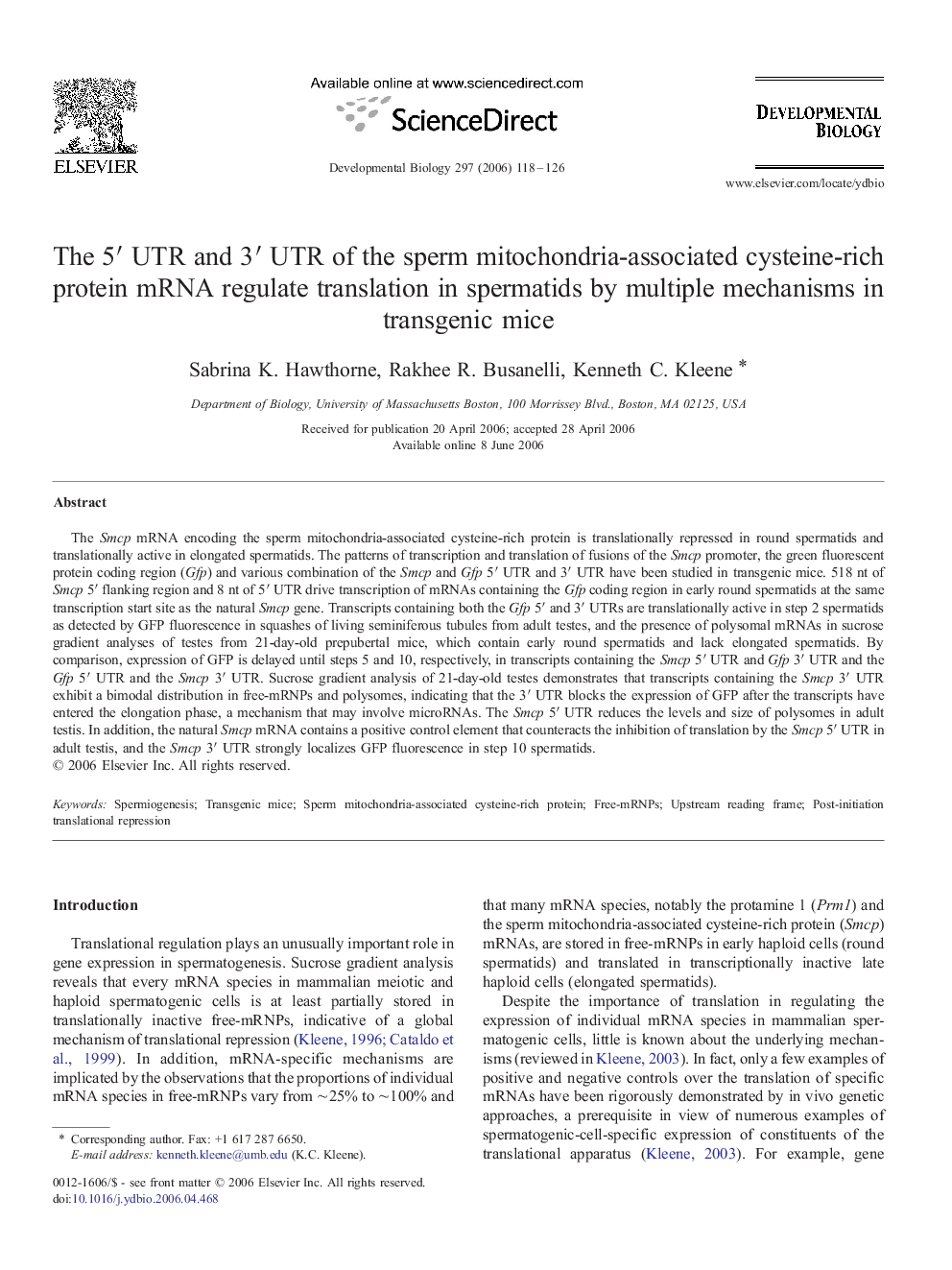| Article ID | Journal | Published Year | Pages | File Type |
|---|---|---|---|---|
| 2176018 | Developmental Biology | 2006 | 9 Pages |
The Smcp mRNA encoding the sperm mitochondria-associated cysteine-rich protein is translationally repressed in round spermatids and translationally active in elongated spermatids. The patterns of transcription and translation of fusions of the Smcp promoter, the green fluorescent protein coding region (Gfp) and various combination of the Smcp and Gfp 5′ UTR and 3′ UTR have been studied in transgenic mice. 518 nt of Smcp 5′ flanking region and 8 nt of 5′ UTR drive transcription of mRNAs containing the Gfp coding region in early round spermatids at the same transcription start site as the natural Smcp gene. Transcripts containing both the Gfp 5′ and 3′ UTRs are translationally active in step 2 spermatids as detected by GFP fluorescence in squashes of living seminiferous tubules from adult testes, and the presence of polysomal mRNAs in sucrose gradient analyses of testes from 21-day-old prepubertal mice, which contain early round spermatids and lack elongated spermatids. By comparison, expression of GFP is delayed until steps 5 and 10, respectively, in transcripts containing the Smcp 5′ UTR and Gfp 3′ UTR and the Gfp 5′ UTR and the Smcp 3′ UTR. Sucrose gradient analysis of 21-day-old testes demonstrates that transcripts containing the Smcp 3′ UTR exhibit a bimodal distribution in free-mRNPs and polysomes, indicating that the 3′ UTR blocks the expression of GFP after the transcripts have entered the elongation phase, a mechanism that may involve microRNAs. The Smcp 5′ UTR reduces the levels and size of polysomes in adult testis. In addition, the natural Smcp mRNA contains a positive control element that counteracts the inhibition of translation by the Smcp 5′ UTR in adult testis, and the Smcp 3′ UTR strongly localizes GFP fluorescence in step 10 spermatids.
